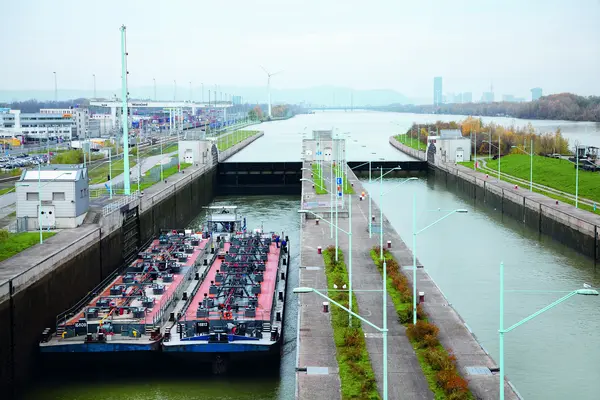
Locks on the Danube
There are a total of 18 river power plants on the Danube waterway (from Kelheim to Sulina). These generate energy by utilising the gradient of the river and the accumulation of water behind the dam. Locks are used to enable vessels to overcome the resulting differences in height along the river and can consist of one or more (usually two) chambers. Fourteen of the eighteen locks on the Danube have two lock chambers, thus enabling the simultaneous locking of vessels travelling upstream and downstream.
Due to the steep gradient of the Upper Danube between Kelheim and Gönyu, there are a total of sixteen power plants with locks. On the Middle and Lower Danube there are only two locks. These are situated at the Iron Gates, a gorge forged by the Danube through the Carpathians, which forms the border between Romania and Serbia. These two locks are also the largest on the Danube: The locks Iron Gate I (river km 942.90) and Iron Gate II (river km 863.70/ 862.85) each have two lock chambers which are 310 metres long and 34 metres wide, located on the right bank and the left bank. The lock chambers on the right bank (Djerdap I and II) are maintained and run by Serbia, while those on the left bank (Portile de Fier I and II) are maintained and run by Romania.
